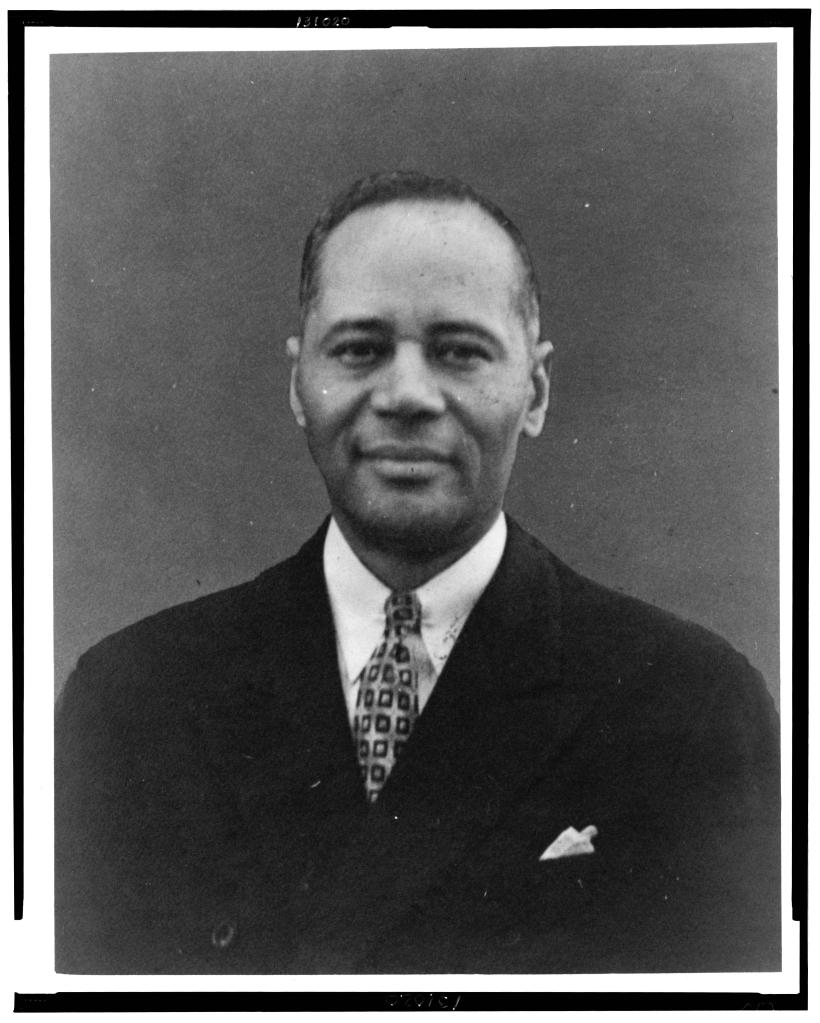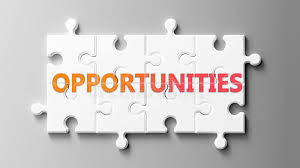For Black History Month, the Law Library will spotlight Black law figures throughout history and their contributions to the legal field. Each week, a different figure will be featured.
by Sydney Hamilton, 1L

This month, we’ve looked back at a few figures who made the legal field more inclusive and changed the course of history. Their contributions paved the way for countless Black attorneys and legal scholars working today. So, to close out this Black History Month, let’s recognize the Black legal leaders of today who are continuing the legacy of their predecessors. Read more about each leader by selecting the triangle to the left of their name.
Ketanji Brown Jackson
While she spent most of her adolescence in Miami, Ketanji Brown Jackson was born in Washington, D.C., where she now spends her days as a Supreme Court Justice.[1] After President Biden appointed her in 2022, Jackson became the first Black woman to serve on the United States Supreme Court. Before this significant accomplishment, Jackson held several other positions, including a clerkship for Associate Justice Stephen G. Breyer and serving as Vice Chair and Commissioner on the U.S. Sentencing Commission.[2] Despite being a new Justice, Jackson has already established her voice in the court, having already written a few solo dissents in her first term alone.[3]
[1] “The Current Court: Justice Ketanji Brown Jackson,” Supreme Court Historical Society. Accessed February 25, 2024. https://supremecourthistory.org/supreme-court-justices/associate-justice-ketanji-brown-jackson/
[2] “Ketanji Brown Jackson,” Oyez. Accessed February 25, 2024. https://www.oyez.org/justices/ketanji_brown_jackson
[3] Adam Liptak, “In Her First Term, Justice Ketanji Brown Jackson ‘Came to Play,’ The New York Times, July 7, 2023. Accessed February 25, 2024. https://www.nytimes.com/2023/07/07/us/supreme-court-ketanji-brown-jackson.html

Official White House Photo by Adam Schultz
Stacey Abrams
Though she grew up in Mississippi, Stacey Abrams literally and figuratively became a representative of Georgia. A Spelman College and Yale Law School graduate, Abrams served in the Georgia House of Representatives for eleven years and became minority leader in 2010.[1] In 2018, Abrams founded Fair Fight, an initiative that addresses voter suppression.[2] Abrams rose to prominence that same year when she announced her Georgia governor campaign. Despite losing, she was cemented as the first Black woman in a gubernatorial race to win a major party’s primary. During the 2020 Presidential and Senate elections, the media credited Abrams as the leading reason behind the Democratic win in Georgia.[3] Abrams is also a prolific novelist in addition to her political accomplishments.[4]
[1] Emma Rothberg, “Stacey Abrams,” National Women’s History Museum. Accessed February 26, 2024. https://www.womenshistory.org/education-resources/biographies/stacey-abrams.
[2] “Meet Our Founder,” Fair Fight. Accessed February 26, 2024. https://fairfight.com/about-stacey-abrams/.
[3] Emma Rothberg, supra.
[4] “Meet our Founder,” supra.

Photo by Gage Skidmore
Bryan Stevenson
While finishing his degree at Harvard Law School, Bryan Stevenson began his exemplary career by working at the Southern Center for Human Rights to represent death row inmates.[1] The experience motivated Stevenson to leave his full-time position with SCHR in Atlanta and move to Alabama, where he founded the Equal Justice Initiative (EJI), a non-profit human rights organization.[2] Stevenson and EJI have argued and won numerous cases concerning prisoner rights and death sentences of innocent inmates.[3] In 1990, Stevenson took on the case of Walter McMillian, a black man who, in 1988, had been falsely accused of the murder of a white woman.[4] Stevenson’s efforts resulted in McMillian’s release from prison in 1993. In 2014, Stevenson published a best-selling novel about the case, Just Mercy, which has since been adapted into a film starring Michael B. Jordan (as Stevenson) and Jamie Foxx (as MacMillian).[5]
[1] “Bryan A. Stevenson – Biography,” NYU School of Law. Accessed February 26, 2024. https://its.law.nyu.edu/facultyprofiles/index.cfm?fuseaction=profile.biography&personid=20315.
[2] Meg Grant, “Bryan Stevenson,” People, November 27, 1995. Accessed February 26, 2024. https://people.com/archive/bryan-stevenson-vol-44-no-22/.
[3] “Bryan Stevenson,” Equal Justice Initiative. Accessed February 26, 2024. https://eji.org/bryan-stevenson/.
[4] Meg Grant, “Bryan Stevenson,” People.
[5] Id.

Photo by James Duncan Davidson
Kamala Harris
Kamala Harris has steadily climbed up the legal and political ladders for most of her life. After working as an assistant district attorney for the prosecutor’s office in Oakland, California, Harris eventually ran for District Attorney of San Francisco in 2003 against her former boss.[1] Despite the close race, Harris won and became the first Black woman in California’s history to be elected to the position.[2] Harris nabbed an even tighter victory in 2010 when she narrowly won the race for Attorney General for California; Harris beat her opponent, Steve Cooley, by only 0.8 percentage points.[3] As Attorney General, she won a $20 billion mortgage settlement for California homeowners.[4] In 2017, Harris was sworn into the Senate, and by 2019, she announced her campaign for President of the United States.[5] Though Harris eventually dropped out of the race, she joined Joe Biden as his running mate. Upon the two winning the 2020 Presidential Election, Harris became the first female, first Black, and first Asian Vice President of the United States.
[1] Catherine Kim, Zack Stanton, “55 Things You Need to Know About Kamala Harris,” POLITICO, August 11, 2020. Accessed February 26, 2024. https://www.politico.com/news/magazine/2020/08/11/kamala-harris-vp-background-bio-biden-running-mate-2020-393885
[2] Id.
[3] Id.
[4] “Kamala Harris: The Vice President,” The White House. Accessed February 26, 2024. https://www.whitehouse.gov/administration/vice-president-harris/
[5] Andrea Wurzburger, “Vice President Kamala Harris’ Career in Photos,” People, October 20, 2023. Accessed February 26, 2024. https://people.com/politics/kamala-harris-career-in-photos/

Photo by Gage Skidmore
Benjamin Crump
An avid activist since his days at Florida State University, Ben Crump has made it his business to defend the Black community.[1] In the wake of numerous reports of police brutality against Black Americans and the rise of the Black Lives Matter movement, Crump became known widely when he represented the family of Trayvon Martin.[2] Although the court acquitted George Zimmerman—the man who shot and ultimately killed Martin—of murder, Crump acquired a million-dollar settlement with Zimmerman’s homeowner’s association on behalf of the Martin family.[3] Crump went on to represent the families of Michael Brown, George Floyd, and Breonna Taylor, winning large settlements for them, too.[4] In addition to these cases, Crump also defended the citizens of Flint, Michigan, during the ongoing Flint Water Crisis and spurred a suit against Johnson & Johnson after reports that its powder had led to several cases of ovarian cancer in Black and Hispanic women. [5] [6]
[1] Gareth Evans, “How Ben Crump became America’s go-to police brutality lawyer,” BBC News, May 29, 2021. Accessed February 29, 2024. https://www.bbc.com/news/world-us-canada-57038162
[2] Id.
[3] Id.
[4] Id.
[5] “Flint Water Crisis & Ben Crump,” Pintas & Mullins Law Firm. Accessed February 29, 2024. https://www.pintas.com/resources/flint-crisis-ben-crump/
[6] Dawn Onley, “Civil rights attorney Benjamin Crump goes after Johnson and Johnson for marketed baby powder to Black women,” The Grio, February 26, 2019. Accessed February 29, 2024. https://thegrio.com/2019/02/26/civil-rights-attorney-benjamin-crump-files-class-action-lawsuit-johnson-and-johnson/

Photo attributed to Lorie Shaull
Michelle Obama
As one of the most recognized and admired female figures in history, Michelle Obama is a woman who requires no introduction. A Chicago native and a Harvard Law graduate, Obama got her start in corporate law, where she specialized in intellectual property.[1] Eventually, Obama sought a new path and dedicated herself to public service. This included serving as an assistant commissioner of planning and development at the Chicago City Hall and developing the University of Chicago’s first community service program while working as the Associate Dean of Student Services.[2] When her husband, Barack, was elected President of the United States, Obama became the first Black First Lady of the United States. In her role, Obama launched several successful programs, such as Let’s Move!, which addressed childhood obesity by encouraging children to be physically active and pushing for healthy lunches in US schools.[3] Obama also spearheaded Let Girls Learn, which, with the assistance of the Peace Corps, the US Department of State, and other federal agencies, promoted quality education for girls and young women across the globe.[4] In 2018, Obama published her best-selling memoir Becoming, which charted her journey of growth and the lessons she has learned throughout her extraordinary life.
[1] Rosalind Ross, “The woman behind Obama,” Chicago Times, January 20, 2007. Accessed February 29, 2024. https://web.archive.org/web/20080215230648/http://www.suntimes.com/news/metro/221458%2CCST-NWS-mich21.article
[2] “Michelle Obama,” The White House Historical Association. Accessed February 29, 2024. https://www.whitehousehistory.org/bios/michelle-obama
[3] Id.
[4] Id.

Photo by EJ Hersom
Barack Obama
For the rest of history, the name Barack Obama will always be synonymous with “the first Black President of the United States.” It was considered a historic moment when Chief Justice Roberts swore Obama into office on January 20, 2009. However, technically, this wasn’t the first time that Obama had accomplished such a feat. Funny enough, while attending Harvard Law School, Obama became the first Black president of the Harvard Law Review, attracting media attention even back then.[1] After graduating from college, Obama focused his efforts on rebuilding communities in the US. For example, when he first moved to Chicago, Obama collaborated with local churches to reestablish communities badly affected by the mass closure of steel plants.[2] His penchant for civil rights influenced his work as a lawyer and eventually as a US Senator.[3] In 2007, he began his presidential campaign, a challenging yet ultimately rewarding journey, which resulted in his win over Senator John McCain in 2008. During his presidency, Obama achieved many triumphs, such as appointing several female justices to the Supreme Court, striking down “don’t ask, don’t tell” policies and thus paving the way for same-sex marriage, and adopting the Paris Climate Agreement, which helped decrease greenhouse emissions.[4]
[1] “President Barack Obama,” Obama White House Archives. Accessed February 29, 2024. https://obamawhitehouse.archives.gov/administration/president-obama
[2] Barack Obama,” The White House Historical Association. Accessed February 29, 2024. https://www.whitehousehistory.org/bios/barack-obama
[3] Id.
[4] David Von Drehle, “Honor and Effort: What President Obama Achieved in Eight Years,” Time, December 22, 2016. Accessed February 29, 2024. https://time.com/4616866/barack-obama-administration-look-back-history-achievements/

Photo by Lawrence Jackson













You must be logged in to post a comment.